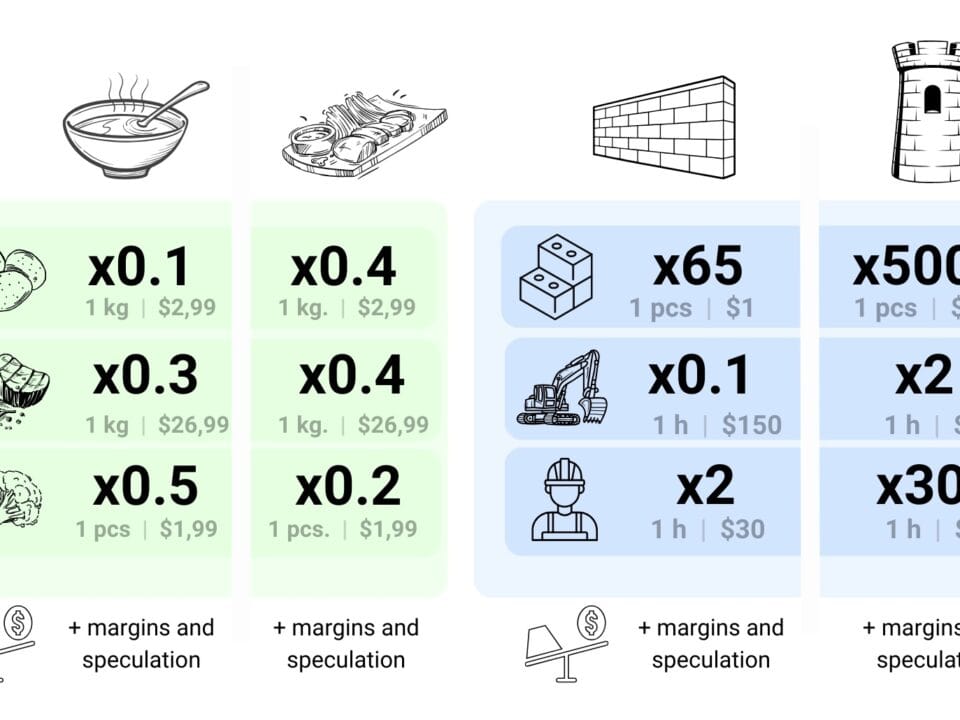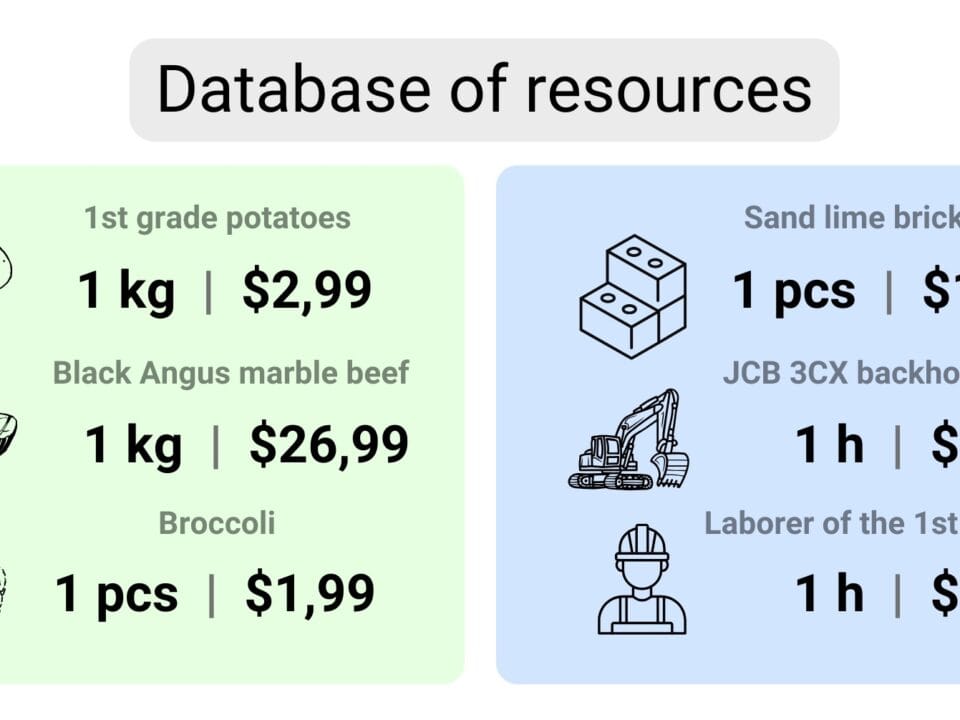Among the many business processes that determine the sustainability of a company in the construction industry, of particular importance – as they were thousands of years ago – are the processes for accurately estimating the number of elements, project cost and schedule (Fig. 5.1-1).
The development of writing was the result of a complex of factors, including the need to record economic transactions, the development of trade and resource management in early societies. The first legally significant documents, clay tablets with calculations of the cost of materials and labor, were used in the context of trade and construction. These tablets recorded the obligations of the parties in the construction of structures and were kept as evidence of bargaining and monetary relations.
For millennia, the approach to estimating has remained largely unchanged: calculations were performed manually, relying on the experience and intuition of the estimating engineer. However, with the advent of modular ERP systems and CAD tools, the traditional approach to estimating quantity, cost and time began to transform rapidly. Today’s digital technologies allow for full automation of key time and cost calculations, enabling greater accuracy, speed and transparency in resource planning for construction projects.

The main focus of construction companies is on accurate time and cost data. These in turn depend on the amount of materials and labor used, and their transparency affects profitability. However, the complexity of calculation processes and their lack of transparency often lead to higher project costs, missed deadlines and even bankruptcy of companies.
According to the KPMG report “Familiar Problems – New Approaches” (2023), only 50% of construction projects are completed on time, and 87% of companies note increased control over the economics of capital projects. The main problems are related to the lack of qualified personnel and the difficulty of risk forecasting (KPMG, “Familiar challenges – new approaches. 2023 Global Construction Survey,” January 1, 2023).
Historical costing and process time data is collected during the construction of past projects throughout the life of the construction company and entered into databases of various systems (ERP, PMIS BPM, EPM, etc.).
The availability of quality historical costing data is a major competitive advantage for a construction organization, directly affecting its survivability.
Estimating and costing departments in construction and engineering companies are created to collect, store and update historical data on project calculations. Their main function is to accumulate and systematize the company’s experience, which allows the accuracy of estimating the scope, timing and cost of new projects to improve over time. This approach helps minimize errors in future calculations based on the practice and results of already implemented projects.




















